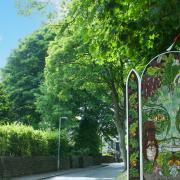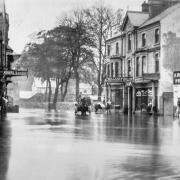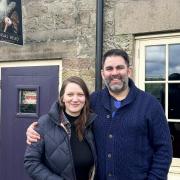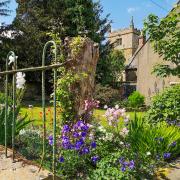Fitted with a class-leading diesel engine, Subaru's Forester is suddenly an informed choice for compact 4x4 and all-wheel drive estate buyers alike. Jonathan Crouch reports ...
The Subaru Forester’s clever diesel 2.0D engine, along with the current generation model’s larger body, puts the car in a better position than ever before to snag sales from traditional smallish 4x4s, as well as to continue serving those family buyers who need occasional extra traction and are in search of something that little bit different. This Japanese brand took its time to develop a diesel engine but the end result was worth the wait. The Forester is the marque’s cross between all-wheel drive estate and compact 4x4 and it seems astonishing that it has campaigned quite successfully on the UK market for over ten years without a diesel engine. This tells you a lot about the loyal following this model has attracted since its 1997 UK launch. We’ve now reached the third generation guise of the car that really started off the concept of a pumped up executive estate car with the ability to handle light off road duties. More recently launched rivals include Volvo’s XC70 and Audi’s Allroad but both are far more expensive, leaving the Subaru a largely unobstructed run at more pragmatic buyers who are going to be particularly attracted by the 2.0D version. This Forester diesel has a number of class-leading qualities but one of them isn’t the 145PS output of its boxer engine which struggles a little more with this weightier model than it does when installed in the company’s more tarmac-orientated Legacy range. Still, the rest to sixty sprint is dispatched in a quite acceptable 10 seconds on the way to a top speed of 115mph, which is quite as fast as most will want to go. Usefully, the extra engine torque over the petrol model allows a full 2,000 kg braked towing limit. The class-leading parts are the emissions (167g/km), fuel economy (44.8mpg on the combined cycle) and range (in Europe, you’ll be able to go around 1,000kms between fill-ups). Refinement is another huge strength: when this engine was fitted in the Legacy, Subaru claimed a lower official moving sound level than a Rolls-Royce Phantom. That’s down to the engine’s unique configuration. Subaru has founded its reputation on the low centre of gravity afforded by a horizontally-opposed, or boxer, engine where the cylinders lay flat on their sides, the pistons travelling towards each other like the fists of two pugilists. Manufacturing a diesel engine in this guise has taken some effort but the travails have been worth it. The first thing that’s apparent is that a rising ‘waistline’ and broader front end have given this third generation version more of a generic compact 4x4 stance. With 110mm more height, 45mm more width and 90mm extra grafted into the wheelbase, this car competes against bigger (and tougher) competition – cars like the Toyota RAV4, the Honda CR-V, the Land Rover Freelander and the Nissan X-TRAIL. The styling is neat, and although interiors have never been a Subaru strong point, these too are neat and well finished with a brushed aluminium-look centre console and a big driver information system near the top of the dashboard. The front seats can fold fully flat while the rears split 60/40 and recline. With prices from around �20,000, Forester diesel customers pay a premium of over �2,000 more than the comparable 2.0-litre 150bhp petrol engine but they do get a choice of three trim levels – X, XC and XSn. Apart from the expected symmetrical all-wheel drive system, all versions get Subaru Vehicle Dynamics Control, self-levelling rear suspension, fuel-saving electric power steering and 16inch alloy wheels. You can also expect to find all-round electric windows, 60/40-split rear seats with reclining back-rests, climate-control air-conditioning, a decent CD stereo, front fog lamps, a vehicle information display, a leather-covered height and reach-adjustment steering wheel, heated front seats, mirrors and windscreen wipers pluscruise-control. In the XC, you get bigger alloys, a better stereo and a full-length sunroof, while the pricey XSn adds leather seats and satellite navigation. The engineering and equipment on the Forester positions it as one of the more advanced vehicles in its class. Safety is particularly important for family buyers and the Forester excels in impact absorption for both the vehicle occupants and pedestrians. The front seats get seatbelts with pretensioners and load limiters, the brake pedal is collapsible, all pillars feature impact absorbent materials and there are front, side and curtain airbags. Not only does the Forester lead its class when it comes to emissions (the worst you’ll get is 170g/km) and fuel economy (you’ll get 39.2mpg around town and 48.7mpg on a run), it’s also one of the cheapest to insure. Only the VW Tiguan can match the entry-level version’s Group 9E insurance rating and most rivals are much pricier at your brokers. As always with Subaru, the warranty is one of the best in the industry, offering three year/60,000 mile cover plus three years’ paintwork and 12 years’ anti-corrosion cover. This is in addition to three years’ free membership of Subaru Assistance – a comprehensive home and roadside repair and recovery package throughout the UK and Europe, administered by Mondial Assistance. Service intervals are 12,000 miles. Without this diesel engine, the Forester would doubtless have remained a bit player in the compact 4x4 sector: thus equipped it joins the main cast. Its refinement is a particular strength, showing up some diesel 4x4 rivals for the unacceptably loud rumblers that they actually are. Taking time to get this unit right has been one of the benefits of the Forester’s tardy appearance at this particular party.
Facts at a GlanceCar: Subaru Forester 2.0D rangePrices: �20,785–�25,965 – on the roadInsurance Groups: 9-10CO2 Emissions: 167-170g/km (est)Performance: Max speed 115mph/ 0-60mph 10.0sFuel Consumption: [2.0D X] (urban) 39.2mpg / (extra urban) 48.7mpg / (combined) 44.8mpgStandard Safety"Features: Twin front and side airbags / ABS with EBD / VDCWill it fit in your garage? 4560mm long, 1780mm wide, 1675mm high


























